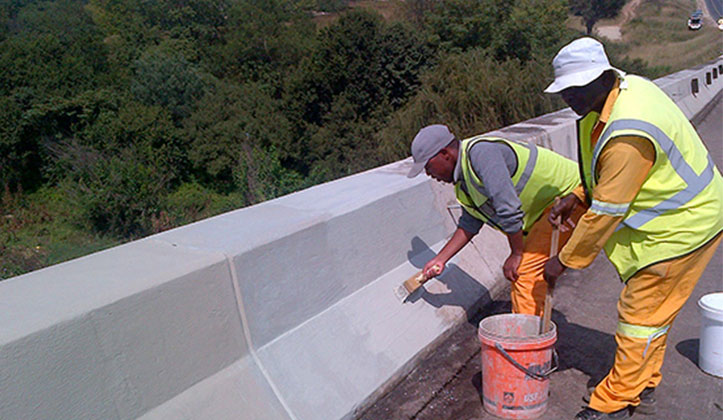Concrete durability depends on proper preventative maintenance
The durability of concrete structures can be greatly increased by a proper preventative maintenance and repair programme, says Warren Trew, Gauteng Sales Manager: General Construction of a.b.e.®.
a.b.e.® is part of the CHRYSO Southern Africa Group.
Trew says many key South African building and civil structures have eroded with age, neglect, misuse, weather factors, rebar corrosion, extraneous loading and natural disasters. “Neglecting the need to introduce proper repair and maintenance systems for these structures results in reduced capital value and wastage of resources which could lead to poor quality of life for communities. With large parts of South Africa currently experiencing devastating drought, the need for adequate maintenance of water reservoirs and dams particularly comes to mind.
“In a sustainable built environment, structural maintenance is non-negotiable. As soon as a concrete structure is completed, the need for a maintenance programme must start. Maintenance should not be driven simply by the need to correct defects that occur over time, but to avoid these defects in good time,” Trew states.
He says concrete is a durable but not eternal material and will over time deteriorate and require repair or replacement, especially in zones where chloride ingress or carbonation are a reality. Repairing deteriorated concrete and restoring its structural integrity should consequently form part of the initial design – but are frequently resorted to only when emergencies arise.
“The first step in a successful repair project involves early damage assessment and arriving at a proper diagnosis. The owners should not wait until the concrete shows obvious signs of distress. The most crucial aspect of the repair process is the evaluation stage. To properly repair any damage, it’s important to understand what caused the problem and then determine the correct method of repair.
“Experience is vital for the diagnosing, and planning for concrete repairs. While there is a high level of expertise that goes into concrete construction, the skills, understanding and experience required to repair damaged or deteriorated structures are decidedly different from those required to build new structures. That is why it is important to consult reputable suppliers of concrete repair products – companies that can offer more than just the product but also provide advice on its suitability, as well as the system and procedures to be followed for concrete repair projects.
“Among the most common challenges of concrete rehabilitation are crack repair, patching, using strengthening methods (in lieu of repair) like carbon fibre plate or wrap, and generally choosing the most appropriate repair materials for an effective long-term solution. A decision should also be taken on whether strengthening methods should be opted for instead of repair. Fortunately, the range of concrete repair products available today have made it possible to economically refurbish structures that just a few decades ago would have had to be demolished and rebuilt. The input from specialists in concrete rehabilitation – and the selection of the correct products – will avoid common pitfalls of concrete repairs,” Trew observes.
He says a.b.e.®‘s range of concrete repair products is based on epoxies, synthetic resins, silanes and cementitious materials. Applications include flexible slurries and coatings for protecting and waterproofing the concrete parts of bridges, silos, building and water containment structures against attack from their environment. “a.b.e.® can supply a wide range of products – as well as professional advice – on projects such as concrete crack injection, fairing, reprofiling, priming, mortar repair, and the rehabilitation of spalled concrete surfaces to name just a few requirements of concrete repair procedure which could save the owners thousands if not millions of Rands,” he states.
Included in major projects for which a.b.e.® supplied concrete repair products and consultation for are:
• Fish Water Flats sewage works, in Port Elizabeth;
• Kanengo Silo Project, Malawi;
• Mondi Chipper plant, Richards Bay;
• N14 Bridges between Hartbeespoort and Lanseria;
• Omnia fertiliser tank bases, Sasolburg;
• Savana City reservoir, Sebokeng, Gauteng;
• Northam Plats Mine cooling towers;
• Port Elizabeth Airport runway; and
• Coal Tippler Project concrete repair, Richards Bay harbour.





